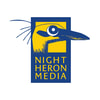|
The first question every aspiring writer ponders over – right after asking how to use a semicolon – is how much to expect from selling their first book. The answer, though I wish I could say differently, is a tragically nebulous “it depends.” While we’d all like a solid answer, writing isn’t like working a nine-to-five job where the salary is solidly established. Most writers enter the literary field because they have a passion, a story inside them that they’re itching to get onto the page. But how much can passion pay? Let’s break it down. Advancements in Traditional Publishing First, there are advancements. Authors who choose to go through a traditional publisher can usually expect to receive an advance from the publisher before the book is officially released. The advance could be anywhere from $5,000 to $50,000 per book and is based on the publishers' prediction of how well the book will sell in the first six to 12 months after publication. The number on the advance varies book by book, simply because of the endless variables that go into determining how marketable a book can be, including genre, chosen publishing company, effort put into marketing, etc. However, a ballpark number for a first-timer’s fiction novel is likely to land between $5000 and $15,000, depending on the story and chosen publisher, while an advance on a nonfiction book is likely to be between $5000 and $20,000, depending on the author’s platform, credentials, and general cultural interest on the topic. Advancements Are Not Charity While an advance can be a big help to starting off your writing career, don’t think that publishers are being charitable or that they’re giving you spending money. Advances are given to help cover the cost of hiring an agent, along with the cost of building an author website, self-promotions, attending conferences, investing in promotional items, etc. etc. They work like a loan, in the way that a percentage each sale – called a royalty - of the contracted book will slowly return money back to the publisher until the advance “debt” is paid off. Be aware, if your book doesn’t sell well and never pays back the money the publisher invested in the advancement, then you could be stuck paying back the deficit. Royalty Percentages and House Standards Now this is where things can get complicated. Most trade publishers like Penguin Random House, Harper Collins, Macmillan, etc., offer a standard royalty on their offered books that varies by version of the book sold. For example, the industry standard eBook royalty for legacy publishers is 25%, while royalties for most trade-paper books are 7.5% of the retail price, and mass market books pay a bit less than that. The most common royalty that people pay attention to is, of course, the hardback books since the royalties offered with them will increase with time and the number of copies sold. The industry standard for hardbacks is 10% of the book’s retail price on the first 5000 copies sold, 12.5% on the next 5000 copies sold, and 15% thereafter. But all these numbers can be abstract and confusing, so here’s an example to help you understand what all this really means. Let’s say you’ve just published your first novel, and you have received an advance of $15,000. If your book is a $25 hardcover, and you’ve got a traditional book contract for 10% royalties with a legacy publisher, you’d be making $2.50 for each of the first 5000 books sold (that’s $12,500!). The publishing house will keep track of that figure and apply the royalties earned as credit to your account. After the first 5000 copies have sold, your earnings will jump to $3.12 per copy sold; then after the first 10,000, your royalties are bumped up to $3.75 per copy sold. Eventually you erase the $15,000 negative balance, and you begin making money that will be sent to you a few times per year. Now you’re in the best possible situation — a company is going to send you checks on a book you finished a year or two ago, and you can finally relish the sweet taste of accomplishment. However: you should be aware that not everybody follows these industry standards, and as a result will make your royalties much more customized to your specific book based on genre, marketing, platform, etc. For example, publishers like Tyndale don’t use the traditional royalty structure and will negotiate a deal for every book they publish, sometimes offering a 16% royalty over the standard 10%, while several retailers such as Barnes & Noble and Walmart tend to put their own prices and discounts on new book releases to garner attention. This means that authors must be keenly aware of which publisher they sign on with and where exactly their books are being promoted. Publishing is a business. If you want the best royalties and services, you should do your research to find the company best suited for you.
0 Comments
Your comment will be posted after it is approved.
Leave a Reply. |
Categories
All
Archives
March 2022
|
|
Help preserve our history and share our stories through the book and media arts by making a tax-deductible donation today.
Night Heron Media is a 501(c)3 non-profit corporation registered in Texas.
|
Copyright © 2024 by Night Heron Media



 RSS Feed
RSS Feed